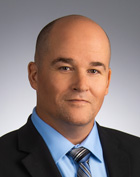Blog
3 Ways Technology Can Reduce Physicians’ Cognitive Load
 At the end of last year, Dr. Atul Gawande penned an article entitled “Why Doctors Hate Their Computers.”
At the end of last year, Dr. Atul Gawande penned an article entitled “Why Doctors Hate Their Computers.”
Gawande illustrates that the brunt of physician animosity toward computers centers on the explosion of information: Physicians spend increasingly more time processing, documenting, and communicating care activities than they ever have before. They spend more time with screens than patients, and their average workday has lengthened considerably due to “pajama time” just to stay caught up.
How has this happened, and what are the impacts on our nation’s clinicians and patients? More importantly, what, if anything, can be done about it? Let’s dive into the problem and explore three ways technology can help hospitals address it.
The Growing Complexity of Delivering Care
Technology should have made the life of a doctor easier. Just over a decade ago, they were sorting through paper charts and documenting patient encounters by hand, carrying a plethora of mobile devices (the “Batman belt” of pagers and phones), and logging countless steps to consult with their colleagues.
Today, the patient record is electronic, most physicians now carry a single smartphone, and technology often facilitates care team collaboration. Less stuff—simpler, right?
But things haven’t been simplified for physicians at all. On the contrary, they’re inundated with more data than ever before, grappling with infinite pieces of information every day.
Their attention is constantly demanded by not only their peers and their patients, but systems. A 2016 JAMA study found that primary care physicians spend over an hour (66.8 minutes) each day simply processing notifications. And because each notification often contains multiple data points (for example, the results from a lab panel may contain over a dozen values), the actual cognitive effort placed on the physician is even greater.
So, who wants to be a doctor? With a job description like this and mounting medical student loan debt, it’s no wonder our country is facing a shortage of 120,000 physicians by 2030.
Cognitive Load Theory, Physician Burnout, and Patient Impact
Despite the growing complexity of care delivery, the human ability to process massive amounts of information has remained constant. A recent NEJM Catalyst article breaks down cognitive load theory, or the factors that influence how much working memory is occupied, and its implications for healthcare:
Intrinsic cognitive load:
The cognitive “weight” of the information or task, determined by the complexity of the material being processed, and this is fixed. NEJM used the example of a more difficult case or a very complicated procedure that has a higher intrinsic load than a more straightforward case or procedure.
Extraneous cognitive load:
The mental load imposed by the organization of information or a task. Another example from NEJM: A poorly organized unit, where one must go to multiple locations to acquire the requisite materials for a procedure, imposes unnecessary extraneous load. “When extraneous load increases, it steals limited working memory, reducing humans’ ability to attend to complex information.” Why does an overwhelming cognitive load burden on physicians matter?
Why does an overwhelming cognitive load burden on physicians matter?
For starters and perhaps most obviously, the amount of information they must process is a primary contributor to physician burnout. Factors cited by physicians, according to the latest comprehensive survey by Medscape, include too many bureaucratic tasks (56 percent), spending too many hours at work (39 percent), increasing computerization of practice (24 percent), and feeling like a cog in a wheel (20 percent).
Not only does the information overload adversely affect the physician experience, a massive problem unto itself (physician burnout has even been called a public health crisis by administrators at leading hospitals), but it also affects patient care. Clinicians ignore safety notifications more than half of the time (49-96 percent) according to Shobha Phansalkar, an assistant professor of medicine at Harvard Medical School. “When providers are bombarded with warnings, they will predictably miss important things,” David Bates, a senior vice president at Brigham and Women’s Hospital in Boston, also told the Washington Post in 2016.
Another study published in the Journal of the American Board of Family Medicine stated that errors related to information handling account for 29 percent of family medicine errors: “Without information that is comprehensive, accessible, timely, and correct, primary care physicians cannot deliver high-quality care.”
How Technology Can Help Physicians Manage Information
Care certainly won’t get less complex, and available information will only continue to grow exponentially, so what can hospital leaders do to lessen the cognitive load on their physicians? The key is to leverage technology to serve the information that truly matters to them in that moment.
Consider the sheer volume of data in EHRs: More than 50,000 data points that individual physicians must sift through to find key information, or to find meaning in the noise. Mayo Clinic conducted 1,500 interviews with clinicians in its own ICUs nationwide to identify how many of the tens of thousands of pieces of information were actually “crucial patient information that clinicians needed to access quickly and easily for effective care.” The answer? Roughly 60 pieces of information that truly mattered, or about 0.1 percent of the data available.
How do you get this information, the data points that actually help physicians make more informed care decisions, to them when they need it? Clinical communication technology is key to providing clinically relevant and actionable information to physicians, and suppressing the information they don’t need to sift through.
 1. A Single Source of Truth
1. A Single Source of Truth
When physicians are proactively seeking out information, it’s critical to have a single source of truth with an intuitive and reliable search function. A web-based, enterprise directory that maintains the contact information, schedules, and preferences—all of which can be updated in real time—ensures that physicians are finding the right colleague at the right time, even if they only know the role or want whoever is on call. Contact and scheduling details that physicians can trust to be current and correct and that they can quickly access helps reduce their extraneous cognitive load.
2. Actionable Information With Clinical Context and Priority
Technology can further limit disruption of physicians’ workflows by including the relevant clinical context needed for them to make an informed decision from wherever they are at that time. Clinical alarm surveillance can correlate and combine valid alarms from clinical systems and deliver the actionable alert to the right clinician’s preferred mobile device. The technology recognizes patterns and can correlate patient data and alarms from multiple sources into one clinically relevant alarm, and importantly, suppress nuisance or non-actionable alarms. This technology prioritizes clinical alarms that require immediate attention (e.g., an elevated MEWS score that indicates a pattern of deterioration) to ensure clinicians remain uninterrupted for alarms that do not require intervention. This same technology can also deliver real-time patient data, including waveforms, that provide the relevant clinical context to physicians’ fingertips in a secure notification, which enables caregivers to make accurate clinical decisions and act on them quickly.
3. Speed
Speed is also extremely important when it comes to responding to critical events. Clinical communication technology allows organizations to build out automated escalations to ensure a timely response. This could be at the device or role level. For example, Dr. Jones may receive the first message as a secure text on her smartphone. If she doesn’t respond, that message is escalated to her pager. If there is still no acknowledgment, then that message is escalated to the role defined for backup—in this case, Dr. Smith, the on-call hospitalist. These escalations further reduce cognitive burden by giving physicians the peace of mind that if they are unable to respond or miss something important, they have the safety net of having that patient alert automatically be delivered to another caregiver.
Speed is also about the time it takes to go from thought to task completion. Many care team communications are routine, so a physician may find herself typing out the same reply repeatedly. Message templates, defined by the organization, department, or user, allow clinicians to create a set of standard messages to respond in seconds to common messages, such as a patient discharge request, to help prevent breaks or bottlenecks in the workflow.
Proven Successes
While technology won’t fully ease physicians’ intrinsic cognitive load, these solutions go a long way toward helping to alleviate the extraneous cognitive load. Imagine cutting the time spent updating schedules by 67 percent because every department and team is empowered to make real-time updates that any staff member can access. Or reducing the volume of code blues by 70 percent because clinical alarm surveillance delivers alerts that matter—when patient deterioration is detected. These are the real results that can be achieved with technology that delivers clinical information to physicians when and where it matters most.



 1. A Single Source of Truth
1. A Single Source of Truth